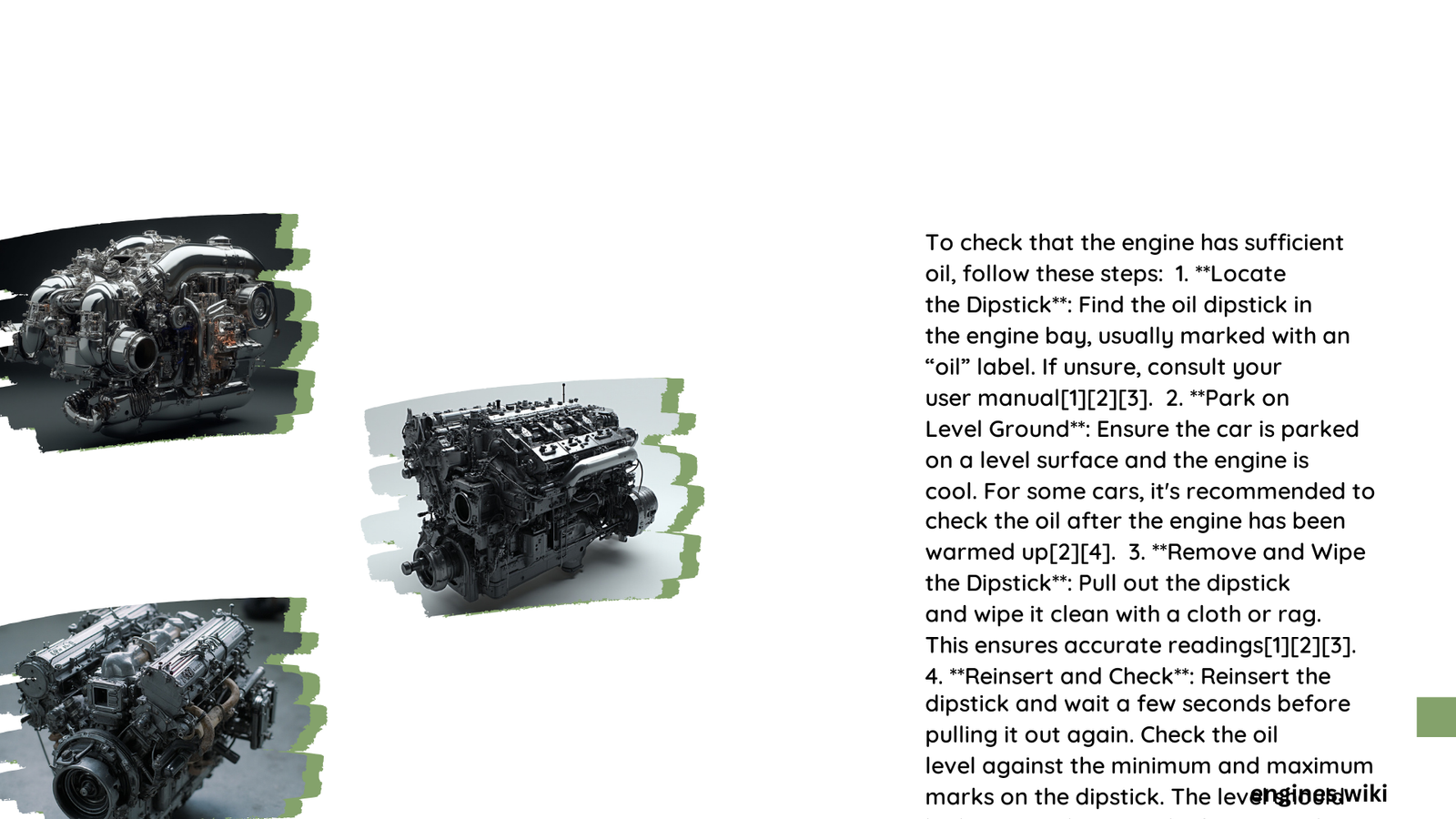Checking engine oil is a critical maintenance task that prevents potential engine damage and ensures optimal vehicle performance. Proper oil level monitoring involves understanding your vehicle’s specific requirements, using the correct tools, and following a systematic approach to accurately measure lubricant quantity and quality. This comprehensive guide will walk you through the precise methods of determining whether your engine has sufficient oil.
Why Is Oil Level Critical for Engine Health?
Engine oil serves multiple crucial functions beyond lubrication:
– Reduces friction between moving parts
– Helps dissipate heat
– Prevents corrosion
– Removes microscopic debris and contaminants
– Supports overall engine performance and longevity
What Tools Do You Need?
| Tool | Purpose | Recommended Type |
|---|---|---|
| Clean Rag | Wiping Dipstick | Lint-free cloth |
| Gloves | Hand Protection | Disposable mechanics gloves |
| Flashlight | Visibility | LED pocket flashlight |
| Owner’s Manual | Reference | Vehicle-specific guide |
How Can You Prepare for Oil Level Check?

Where Should You Position Your Vehicle?
- Select Level Ground
- Parking lot
- Flat driveway
- Garage floor
-
Avoid inclined surfaces
-
Engine Temperature Considerations
- Wait 5-15 minutes after engine shutdown
- Ensure engine is not hot
- Consult manufacturer’s specific recommendations
What Are the Step-by-Step Oil Checking Procedures?
How Do You Locate the Dipstick?
- Identify the distinctive colored handle (typically yellow or orange)
- Usually located near the engine’s front
- Might have an oil can icon or “ENGINE OIL” label
How Should You Extract and Clean the Dipstick?
- Pull dipstick completely out
- Wipe thoroughly with clean, lint-free cloth
- Ensure no residual oil remains
- Look for any visible contamination or unusual coloration
How Do You Interpret Dipstick Markings?
Typical dipstick markings include:
– MIN/MAX indicators
– Cross-hatched area
– Numerical quart measurements
– Low/High level marks
What Are Red Flags During Inspection?
Warning signs include:
– Oil level below minimum mark
– Milky or gritty oil texture
– Dark brown or black coloration
– Burning smell
– Visible metal particles
How Often Should You Check Oil?
Recommended Frequency:
– Every fuel fill-up
– Minimum monthly
– Before long trips
– Every 1,000 miles for older vehicles
What Happens If Oil Level Is Incorrect?
| Oil Level | Potential Consequences |
|---|---|
| Too Low | Engine wear, overheating |
| Too High | Increased internal pressure |
| Contaminated | Reduced lubrication efficiency |
Pro Tips for Accurate Measurement
- Always use manufacturer-recommended oil viscosity
- Keep consistent checking method
- Record oil consumption patterns
- Consider professional inspection annually
When Should You Seek Professional Help?
Contact a mechanic if you observe:
– Rapid oil level drops
– Persistent low oil warnings
– Unusual engine noises
– Visible oil leaks
Conclusion
Mastering engine oil level checks is fundamental to vehicle maintenance. Regular, careful inspections can prevent costly repairs and extend your engine’s lifespan.
